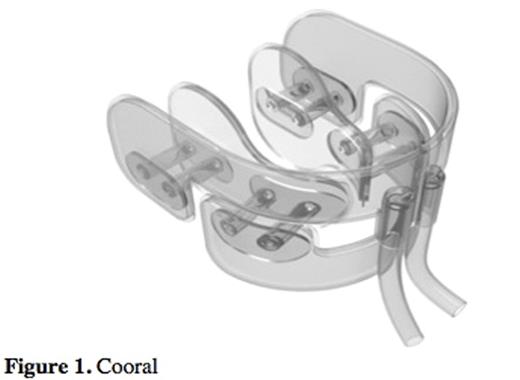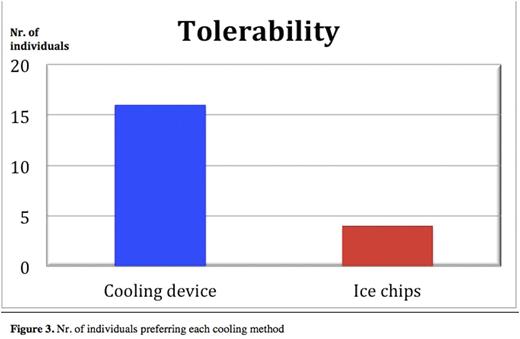Abstract
Introduction: Oral mucositis (OM) is an inflammation of the oral mucosa affecting up to 80% of all patients receiving myeloablative therapy prior to stem cell transplantation. The complication manifests as ulcerations and may require high doses of morphine for pain alleviation.OM may also interfere with food intakeand result in parenteral nutrition, weight loss and impaired quality of life. Current literature indicates very few evidence-based interventions for prevention of OM.
Cryotherapy (CT),using ice chips has reported to efficiently reduced grade and extent of OM, although clinical use is still limited due to several disadvantages. These include adverse teeth sensations, nausea and uneven cooling of the oral mucosa. Moreovercontinuous supply of ice chips is needed during treatment sessions and thewater from which ice chips are made may be of poor quality, leading to health hazards.
Objectives: The primary endpoint of the present study was to evaluate the tolerability of an intraoral cooling device (Cooral) compared with ice chips. Secondary endpoints were temperature reduction and cooling distribution.
Methods:To avoid the adverse effects and reduce the disadvantages of ice chips an optimal fitting mouth-cooling device (Fig. 1), shaped and dimensioned to cool the gums, cheeks, tongue, palate and base of the mouth was designed. Thecooling device is made of a closed channel system with continuous circulating water and has the advantage over ice chips as the water temperature can be adjusted. 20 healthy volunteers (mean age: 24 years) (17 women; 3 men) were enrolled in this cross over study. Each individual used the cooling device and ice chips for 60 minutes in two separate sessions with at least 24 hours apart. Prior to inclusion, the procedure was explained in writing and a written informed consent was obtained. Baseline- and final temperatures were measured (Fig. 2) in eight intraoral locations (right buccal mucosa, left buccal mucosa, upper labial mucosa, lower labial mucosa, anterior and posterior dorsal tongue, ventral tongue and hard palate) using an infrared thermographic camera (FLIR-60). Following each cooling session a questionnaire, specifically developed for the study to assess tolerability, was completed. In total 700 thermographic images were analysed using FlIR-60 tools software and BioPix. Results: The cooling device was found to be significantly better tolerated compared to ice chips and was preferred by 16 out of 20 participants (P=0.0118; Fig. 3). Three individuals preferred ice chips as they were frequently habitually chewing on ice. One individual reported that the device was experienced as too big, a problem that will be solved in the future, as three different sizes of the device will be produced. Finally, the device was found to be as efficient as ice chips in terms of cooling reduction and cooling distribution.
Conclusions: The cooling device was significantly better tolerated and provided as efficient temperature reduction and cooling distribution as ice chips in healthy volunteers. The device has the potential not just to improve the comfort but in the long term also optimize the effect of cryotherapy with the aim of preventing oral mucositis. The next step in this research will be to evaluate the cooling device in a clinical setting to establish its tolerability and efficacy of preventing oral mucositis.
FormulŠrets nederkant
Walladbegi:BraincCool: Employment, Research Funding. Svanberg:BrainCool: Employment, Research Funding. Jontell:BrainCool: Research Funding.
Author notes
Asterisk with author names denotes non-ASH members.




This feature is available to Subscribers Only
Sign In or Create an Account Close Modal